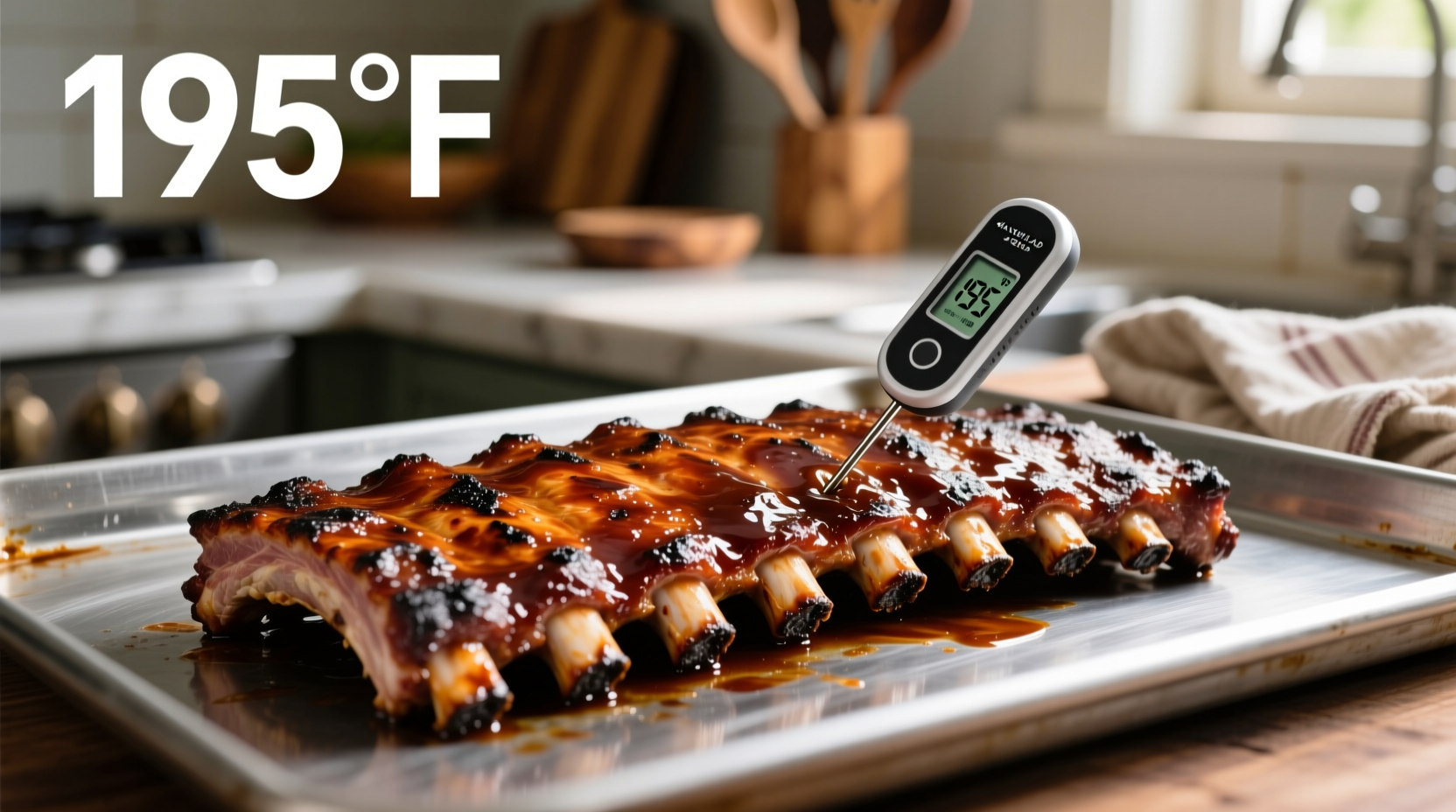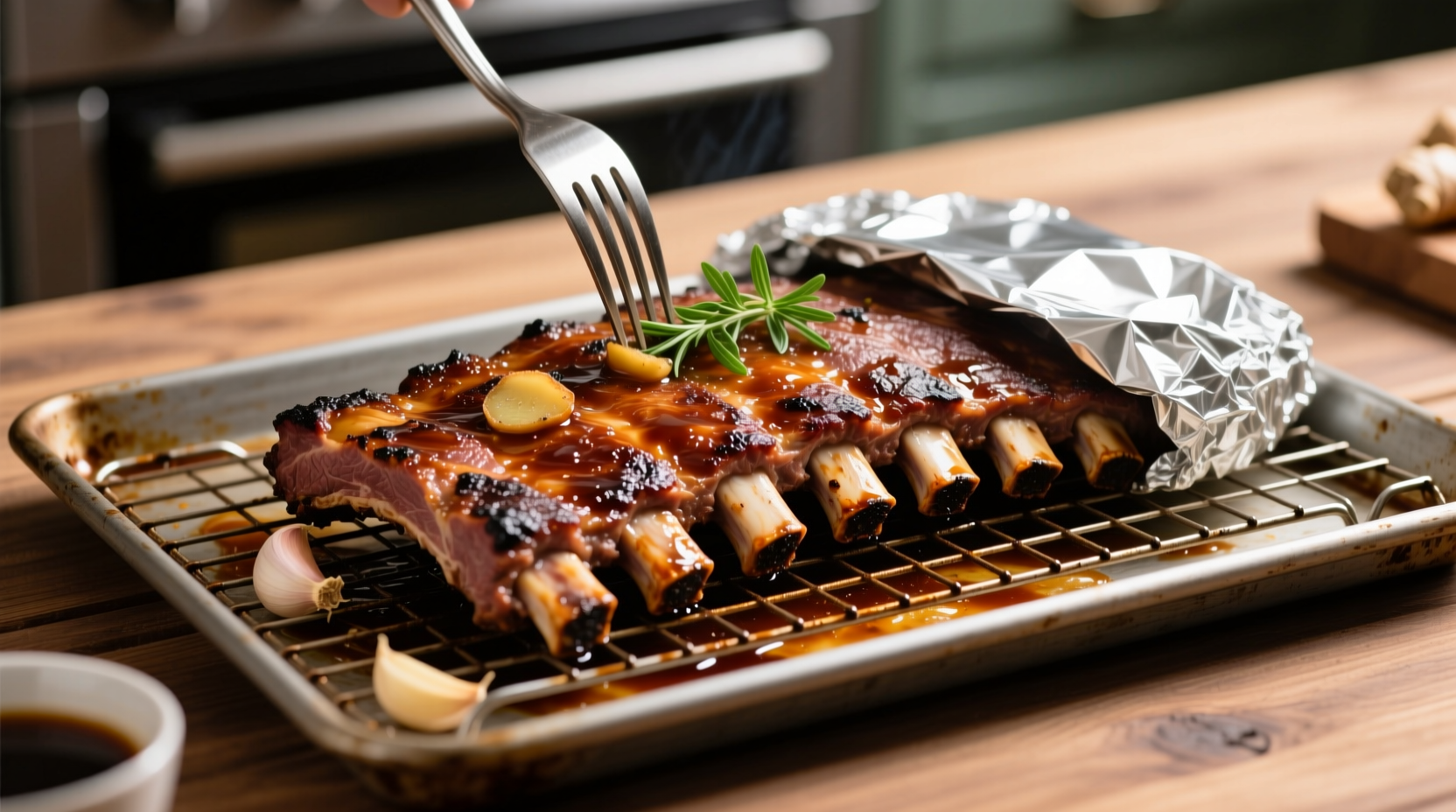For perfectly cooked oven ribs, bake at 275°F (135°C) for 2.5-3 hours for baby back ribs or 3-3.5 hours for spare ribs. The internal temperature should reach 195-203°F (90-95°C) for tender, fall-off-the-bone results. This precise timing ensures optimal texture without drying out the meat.
The Complete Guide to Perfect Oven-Baked Ribs
Nothing beats tender, flavorful ribs cooked to perfection in your home oven. Whether you're preparing for a weekend feast or mastering weeknight dinners, understanding the exact timing and temperature requirements transforms ordinary ribs into extraordinary meals. This guide delivers professional chef-tested methods that guarantee restaurant-quality results every time.
Understanding Rib Types and Their Cooking Requirements
Rib cooking times vary significantly based on cut and size. Baby back ribs (also called loin back ribs) come from higher on the hog near the spine and typically cook faster due to their smaller size and leaner composition. Spare ribs, cut from the belly area, contain more fat and connective tissue, requiring additional cooking time for optimal tenderness.
| Rib Type | Weight Range | Recommended Time | Internal Temp |
|---|---|---|---|
| Baby Back Ribs | 1.5-2.5 lbs | 2.5-3 hours | 195-203°F |
| Spare Ribs | 3-4 lbs | 3-3.5 hours | 195-203°F |
| St. Louis Cut | 2.5-3.5 lbs | 2.75-3.25 hours | 195-203°F |
This comparison reflects USDA Food Safety and Inspection Service guidelines for safe pork preparation, ensuring your ribs reach the minimum safe internal temperature while achieving ideal tenderness. The table provides a quick reference for how long do i cook ribs in the oven based on specific cut characteristics.
Your Step-by-Step Oven Rib Cooking Process
Preparation Phase: Setting Up for Success
Begin by removing the membrane from the bone side of the ribs - this crucial step allows seasoning to penetrate and prevents tough, chewy texture. Pat ribs dry with paper towels, then apply your preferred dry rub generously. For best results, refrigerate seasoned ribs uncovered for 4-12 hours to develop flavor depth.
Cooking Phase: Precision Temperature Control
Preheat your oven to 275°F (135°C) - this low-and-slow method breaks down collagen without drying the meat. Place ribs bone-side down on a wire rack set over a baking sheet lined with aluminum foil (for easy cleanup). Add one cup of liquid (apple juice, broth, or water) to the bottom of the pan to maintain moisture.
For those searching how long to cook pork ribs in oven at 350, note that higher temperatures require significant time adjustments. At 350°F, reduce cooking time to 1.75-2 hours but monitor closely to prevent drying. The lower 275°F temperature consistently delivers superior results for oven baked ribs without foil preparation.

Doneness Testing: Beyond the Clock
While timing provides a guideline, the bend test offers the most reliable doneness indicator. Using tongs, lift the rack from one end - properly cooked ribs will bend significantly, and cracks may appear in the surface. The internal temperature should register 195-203°F (90-95°C) on an instant-read thermometer inserted between bones.
Many home cooks searching how to know when ribs are done in oven rely solely on time, leading to inconsistent results. Professional chefs emphasize that visual and tactile cues matter more than strict timing, as oven temperatures and rib thickness vary.
Context Boundaries: When Standard Guidelines Need Adjustment
Several factors require cooking time modifications. Convection ovens typically cook 25°F hotter than conventional settings, requiring either reduced temperature or shorter cooking times. Bone-in versus boneless preparations affect heat distribution, with boneless ribs cooking approximately 20% faster.
Altitude significantly impacts cooking - above 3,000 feet, increase cooking time by 5-10% as water boils at lower temperatures. Humidity levels in your kitchen environment also affect evaporation rates, potentially requiring additional moisture during cooking.
Avoiding Common Rib Cooking Mistakes
Many home cooks make critical errors that compromise results. Opening the oven door frequently extends cooking time by 15-20 minutes per check due to heat loss. Skipping the resting period (minimum 10-15 minutes) causes juices to escape when cutting. Over-reliance on sauce during cooking creates burnt, bitter flavors rather than the desired caramelized finish.
For those wondering best temperature for oven baked ribs, remember that temperatures below 250°F risk undercooking, while above 300°F often dries out the meat before connective tissues fully break down. The 275°F sweet spot balances safety, texture, and flavor development.
Finishing Techniques for Restaurant-Quality Results
After the initial cooking phase, apply your favorite barbecue sauce and increase oven temperature to 375°F for a 10-15 minute finish. This creates the perfect caramelized exterior while maintaining interior tenderness. For authentic smoke flavor without a grill, add 1-2 tablespoons of liquid smoke to your cooking liquid.
Let ribs rest tented with foil for 10-15 minutes before slicing between bones. This crucial step allows juices to redistribute, ensuring moist, flavorful results every time you cook ribs in the oven.
Frequently Asked Questions
How long do you cook ribs in the oven at 300 degrees?
At 300°F, cook baby back ribs for 2-2.5 hours and spare ribs for 2.5-3 hours. Check for doneness using the bend test and ensure internal temperature reaches 195-203°F for optimal tenderness.
Should I wrap ribs in foil when baking in the oven?
Wrapping ribs in foil (the Texas Crutch method) during the last hour can accelerate cooking and increase tenderness, but it prevents bark formation. For fall-off-the-bone texture without foil, maintain consistent low temperature and sufficient cooking time.
How do I prevent ribs from drying out in the oven?
Maintain moisture by adding liquid to the baking pan, keeping ribs covered for most of the cooking time, and ensuring proper internal temperature (195-203°F). Avoid overcooking and always allow proper resting time before serving.
Can you overcook ribs in the oven?
Yes, overcooking ribs causes the meat to separate completely from the bone and become dry. Properly cooked ribs should have slight resistance when pulling from the bone. Monitor internal temperature closely - exceeding 205°F typically results in undesirable texture.
Do ribs get more tender the longer they cook?
Ribs become more tender as connective tissues break down, but only up to a point. Beyond 203°F internal temperature, muscle fibers begin to dry out. The ideal tenderness occurs between 195-203°F, where collagen has converted to gelatin but moisture retention remains optimal.











 浙公网安备
33010002000092号
浙公网安备
33010002000092号 浙B2-20120091-4
浙B2-20120091-4